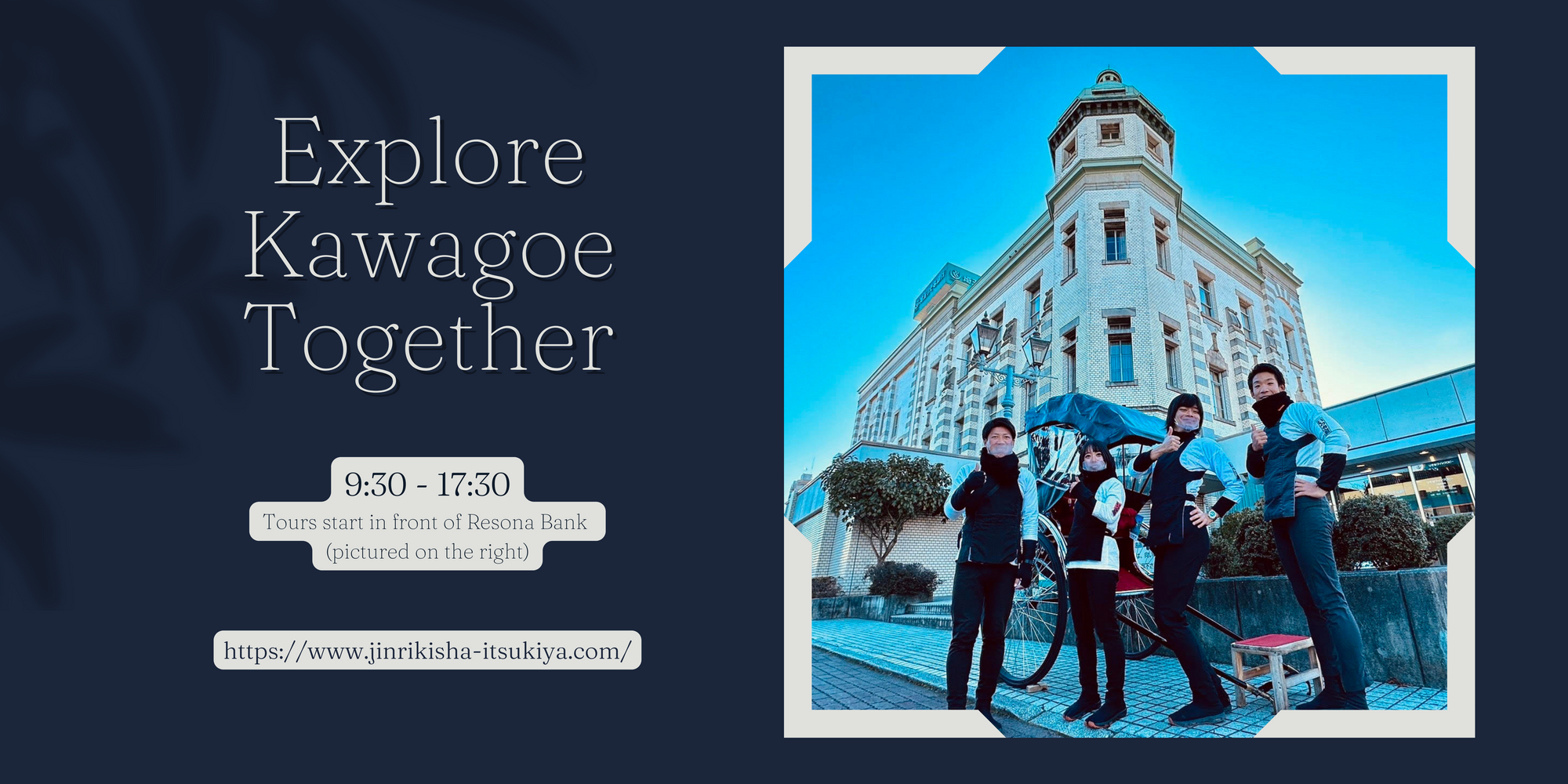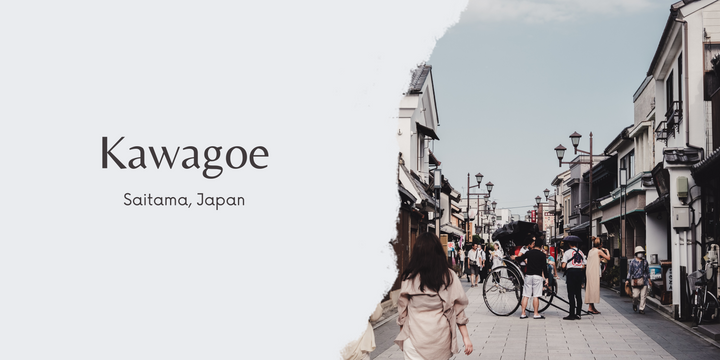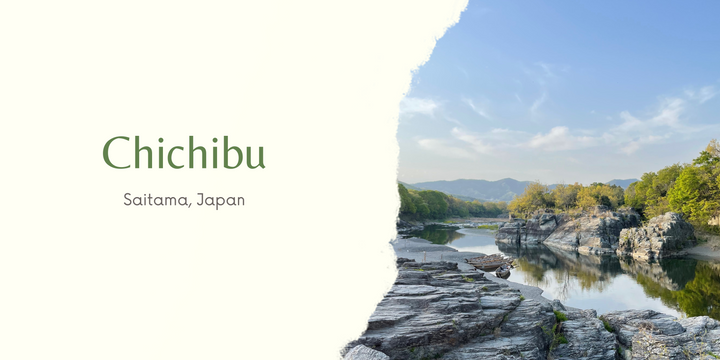Jinrikisha Itsukiya (Japanese rickshaw)
I spoke with Itsuki Tomioka, the owner of Jinrikisha Itsukiya, a company that has been providing jinrikisha (Japanese rickshaw) tours in Kawagoe, Saitama since 2016.
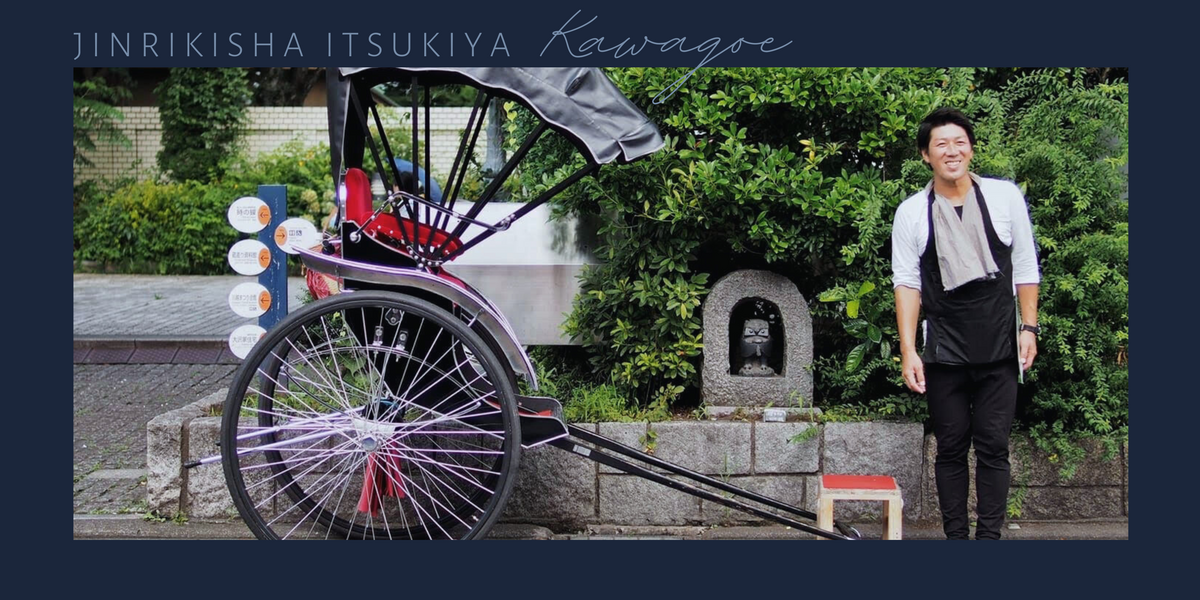
As you stroll through the streets bustling with pedestrians, bikes, and cars, you might catch a glimpse of a Japanese rickshaw, known as a jinrikisha. A jinrikisha is a small, two-wheeled cart or carriage pulled by a human operator (jinrikisha guide). The term "jinrikisha" literally translates to "human-powered vehicle" in Japanese. It's a unique way to experience the area and learn interesting facts or background information from a knowledgeable guide. The guides can further personalize your tour based on your interests and curiosities.
It is believed that jinrikisha was initially introduced during the Meiji era, roughly around 1870, and peaked in popularity during the 1920s. Alternative transportation options like trains and cars replaced the jinrikisha. It wasn't until 1970 that it was re-introduced as a sightseeing option for tourists. You can now find jinrikisha in popular tourist cities such as Kyoto, Asakusa, Hakone, and Kawagoe.
To gain a more personal perspective, I had the opportunity to speak with Itsuki Tomioka, the owner of Jinrikisha Itsukiya, a company that has been providing jinrikisha tours in Kawagoe, Saitama since 2016. Having grown up in Kyoto, he was quite familiar with jinrikisha and decided to work for a renowned national jinrikisha establishment.
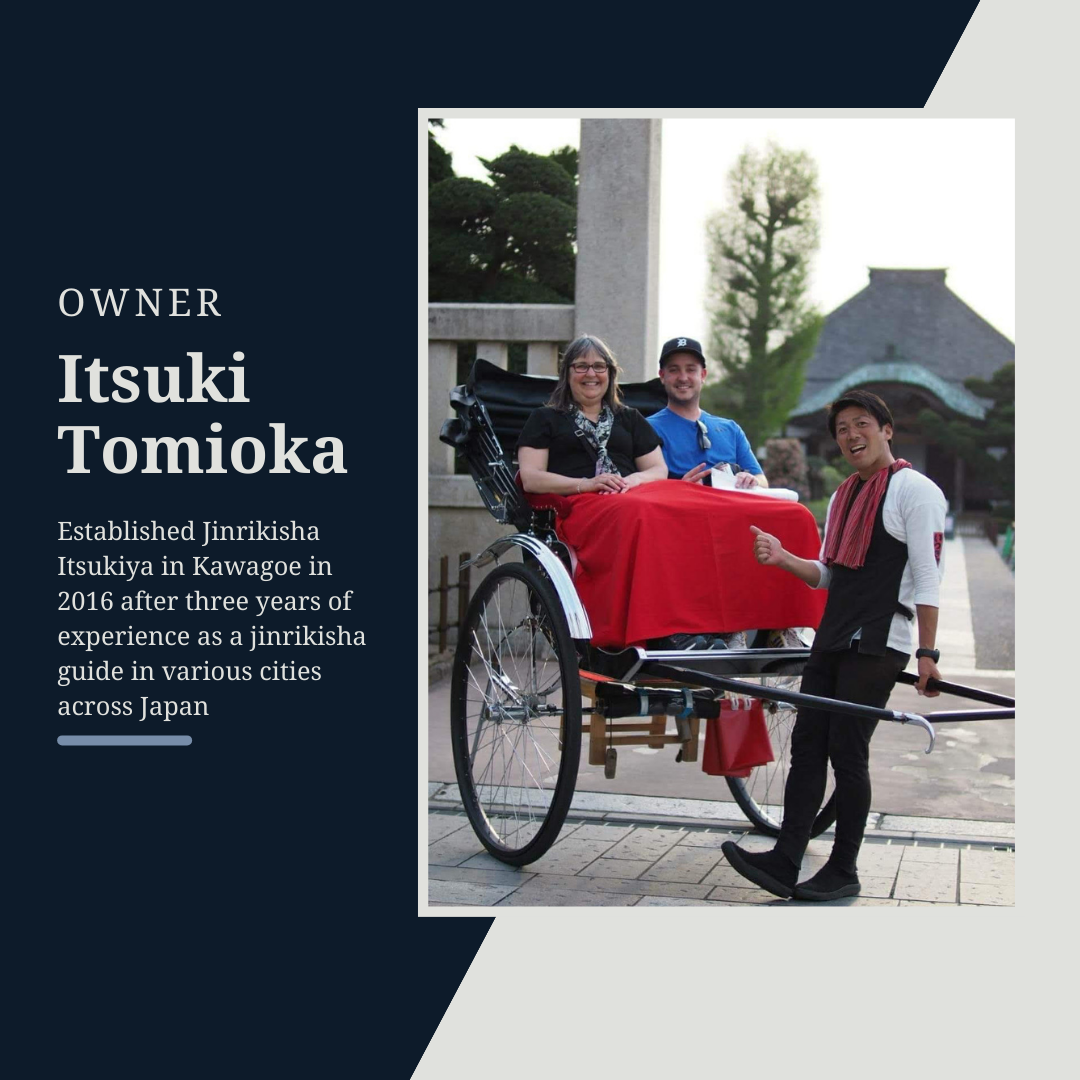
Continuing as a jinrikisha guide and establishing your own jinrikisha business seem related but require vastly different commitments, what made you decide to start your own business?
I spent those three years at the company knowing I eventually wanted to start my own business. I wasn't sure what exactly then, but those three years served as my personal deadline as I brainstormed my next steps. In the end, it felt very natural to establish a jinrikisha business. To this day, I still serve as a jinrikisha guide four or five times a week, so it's not an either-or.
Have you noticed any unique aspects of Kawagoe compared to your experiences operating a jinrikisha in cities like Kyoto and Asakusa?
Unlike Kyoto and Asakura, which are mega-tourist cities, Kawagoe is a much tighter-knit community. There are local residents who live right behind or a few blocks away from the main tourist spots. During my first three years as a jinrikisha guide, I personally felt the importance of community relationships. When I came to Kawagoe, I made a proactive effort to participate in community events.
I want to especially treasure our relationships with local residents. I start each morning by picking up trash. I've also supported the Kawagoe Festival with its prep, set-up, and breakdown. I want to do my part in the community to ensure that traditions are passed down.
Side Note: The Kawagoe Festival is held on the third weekend of October. The festival features spectacular parades of towering festival floats. Some of these floats are said to date back to the late Edo period (~1850s). In 2019, 880,000 joined the festival from across the nation.
In the 7 years that you've operated in Kawagoe, what changes have you witnessed?
Kawagoe has definitely seen a significant increase in domestic tourists. With the recent lifting of Covid restrictions, I've also seen a growing number of international tourists from across the world.
Side note: In 2019, the number of domestic tourists to Kawagoe reached 7,757,000, an all-time high since data was first collected in 1982.
Do you have any recommendations for places to visit in Kawagoe?
There are so many great places. Of course, I highly recommend Kuranomachi Main Street. If you have time, though, I also encourage people to visit the Kawagoe Castle and Kitain Temple.
The next time you're in Kawagoe, consider taking a tour with Jinrikisha Itsukiya. There are about 10 guides, with some speaking English, so don't worry about the language barrier! You can also follow their Facebook and Instagram accounts for behind-the-scene shots and stories.
